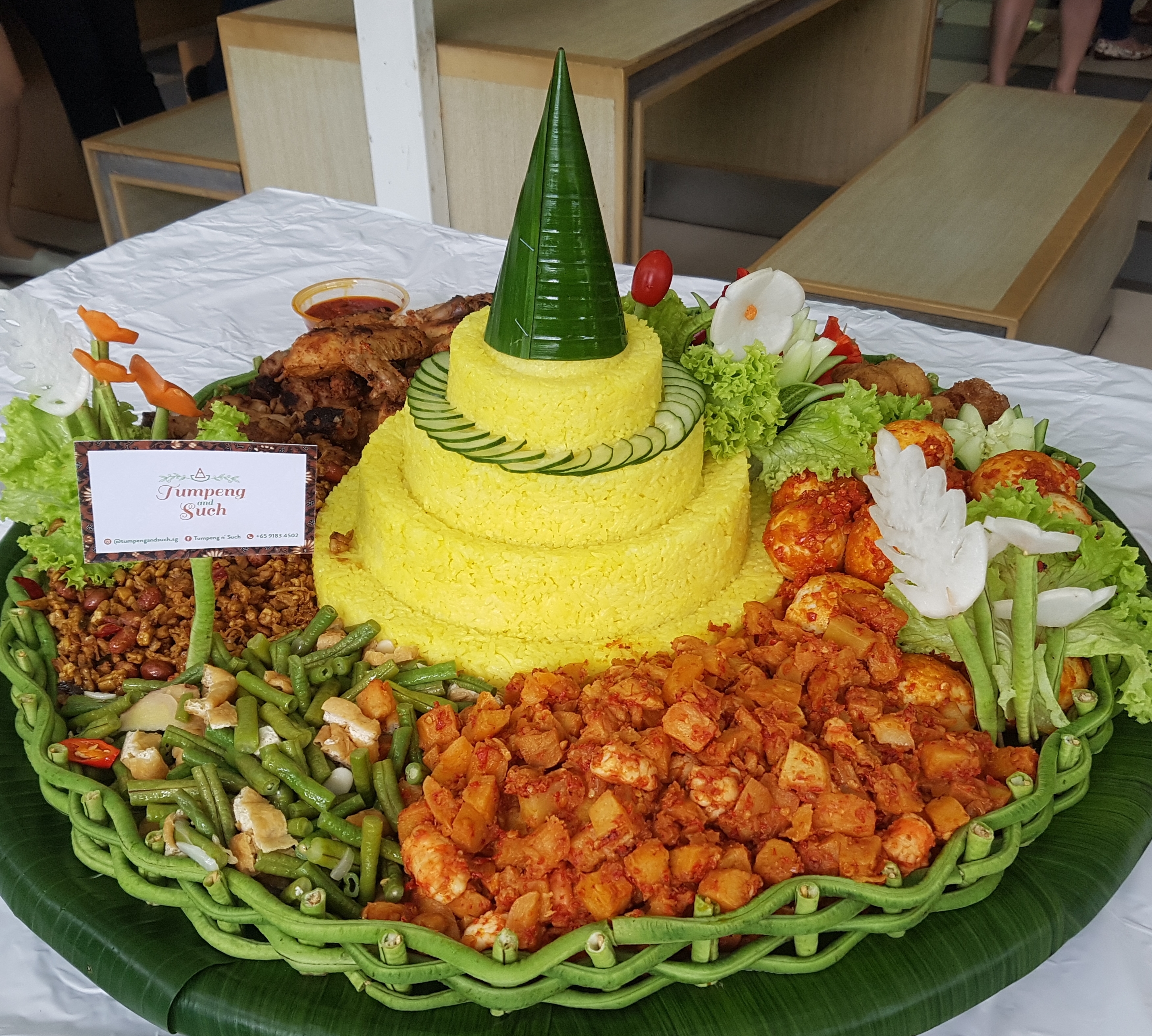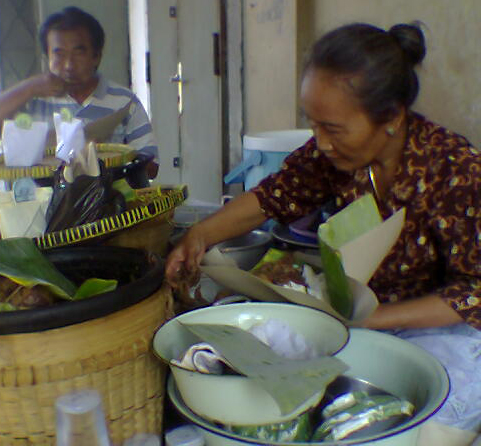|
List Of Indonesian Dishes
This is a list of selected dishes found in Indonesian cuisine. Staple foods Main dishes Curries Meals Soy-based foods Preserved meats Rice dishes and porridges Congees and porridges Rice cake dishes Rice dishes Noodle dishes Soups and stews Salads and vegetable dishes Breads and sandwiches Snacks and starters Savoury snacks Sweet snacks Crackers, chips, and crisps Sweet desserts Cheeses Beverages Seasonings and condiments Common ingredients Spices * Anise (''Adas Manis'') * Asam kandis (dried fruit of ''Garcinia xanthochymus'') * Asam sunti (dried fruit of ''Averrhoa bilimbi'') * Candlenuts (''Kemiri'') * Cardamom (''Kapulaga'') * Chili (''Cabai'') * Cinnamon (''Kayu Manis'') * Clove (Cengkeh) * Coriander seeds (''Ketumbar'') * Cumin seeds (''Jinten'') * Fennel (''Adas'') * Fenugreek (Klabet) * Fingerroot (''Temu Kunci'') * Galangal (''Lengkuas'') * Garcinia atroviridis (''Asam Gelugur'') * Garlic (Bawang putih ... [...More Info...] [...Related Items...] OR: [Wikipedia] [Google] [Baidu] |
Tumpeng
Tumpeng (Javanese script, Javanese: ; Balinese script, Balinese: ) is an Indonesian cuisine, Indonesian cone-shaped rice dish with side dishes of vegetables and meat originating from Javanese cuisine. Traditionally featured in the ''slametan'' ceremony, the rice is made by using a cone-shaped woven bamboo container. The rice itself may be plain steamed rice, Nasi uduk, uduk rice (cooked with coconut milk), or Nasi kuning, yellow rice (uduk rice colored with (turmeric)). The rice cone is set out on the (rounded woven bamboo container), covered with a banana leaf, and surrounded by assorted Indonesian dishes. In 2013, the Ministry of Culture and Tourism (Indonesia), Indonesian Ministry of Tourism and Creative Economy promoted tumpeng as one of 30 Indonesian cuisine, Indonesian culinary icons and declared it Indonesia's official national dish in 2014, describing it as "the dish that binds the diversity of Indonesian various culinary traditions". Tumpeng is a symbol of gratitude. ... [...More Info...] [...Related Items...] OR: [Wikipedia] [Google] [Baidu] |
Cornmeal
Maize meal is a meal (coarse flour) ground from dried maize. It is a common staple food and is ground to coarse, medium, and fine consistencies, but it is not as fine as wheat flour can be.Herbst, Sharon, ''Food Lover's Companion'', Third Edition, Pg. 165, Barrons Educational Series Inc, 2001 In Mexico and Louisiana, very finely ground cornmeal is referred to as corn flour. When fine cornmeal is made from maize that has been soaked in an alkaline solution, e.g., limewater (a process known as nixtamalization), it is called masa harina (or masa flour), which is used for making arepas, tamales, and tortillas. Boiled cornmeal is called polenta in Italy and is also a traditional dish and bread substitute in Romania. Types There are various types of cornmeal: *''Blue cornmeal'' is light blue or violet in color. It is ground from whole blue corn and has a sweet flavor. The cornmeal consists of dried corn kernels that have been ground into a fine or medium texture. *''Steel-gro ... [...More Info...] [...Related Items...] OR: [Wikipedia] [Google] [Baidu] |
Jackfruit
The jackfruit or ''nangka'' (''Artocarpus heterophyllus'') is a species of tree in the Common fig, fig, mulberry, and breadfruit family (Moraceae). The jackfruit is the largest tree fruit, reaching as much as in weight, in length, and in diameter. A mature jackfruit tree produces some 200 fruits per year, with older trees bearing up to 500 fruits in a year. The jackfruit is a multiple fruit composed of hundreds to thousands of individual flowers, and the fleshy petals of the unripe fruit are eaten by humans. The jackfruit tree is well-suited to tropical lowlands and is widely cultivated throughout tropical regions of the world, particularly from South Asia to Southeast Asia and Oceania. Its ripe fruit can be sweet depending on grown variety, which is commonly used in desserts. Canning, Canned green jackfruit has a mild taste and meat-like texture that lends itself to being called "Meat alternative, vegetable meat". Jackfruit is commonly used in South Asian cuisine, South ... [...More Info...] [...Related Items...] OR: [Wikipedia] [Google] [Baidu] |
Central Java
Central Java (, ) is a Provinces of Indonesia, province of Indonesia, located in the middle of the island of Java. Its administrative capital is Semarang. It is bordered by West Java in the west, the Indian Ocean and the Special Region of Yogyakarta in the south, East Java in the east, and the Java Sea in the north. It has a total area of 33,750.37 km2, with a population of 36,516,035 at the 2020 CensusBadan Pusat Statistik, Jakarta, 2021. making it the third-most populous province in both Java and Indonesia after West Java and East Java. The official population estimate in mid-2024 was 37,892,280 (comprising 19,037,740 males and 18,854,540 females).Badan Pusat Statistik, Jakarta, 28 February 2024, ''Provinsi Jawa Tengah Dalam Angka 2024'' (Katalog-BPS 1102001.33) The province also includes a number of offshore islands, including the island of Nusa Kambangan, Nusakambangan in the south (close to the border of West Java), and the Karimunjawa, Karimun Jawa Islands in the Java ... [...More Info...] [...Related Items...] OR: [Wikipedia] [Google] [Baidu] |
Special Region Of Yogyakarta
The Special Region of Yogyakarta is a province-level special region of Indonesia in southern Java. It is a semi-enclave that is surrounded by on the landward side by Central Java Province to the west, north, and east, but has a long coastline on the Indian Ocean to the south. Co-ruled by the Yogyakarta Sultanate and the Duchy of Pakualaman, the region is the only officially recognized diarchy within the government of Indonesia. The city of Yogyakarta is a popular tourist destination and cultural center of the region. The Yogyakarta Sultanate was established in 1755 and provided unwavering support for Indonesia's independence during the Indonesian National Revolution (1945–1949). As a first-level division in Indonesia, Yogyakarta is governed by Sultan Hamengkubuwono X as the governor and Duke Paku Alam X as the vice governor. With a land area of just 3,170.645 km2, it is the second-smallest province-level entity of Indonesia after Jakarta. Name In Javanese, it is ... [...More Info...] [...Related Items...] OR: [Wikipedia] [Google] [Baidu] |
Nasi Gudeg
Nasi may refer to: Food Dishes Nasi Goreng is an Indonesian and Malay word for ''cooked rice'', featured in many Southeast Asian dishes *Nasi goreng, a popular rice dish often simply called ''nasi'' *Other Southeast Asian ''nasi'' dishes: **Nasi ambeng **Nasi bakar **Nasi bogana **Nasi campur **Nasi dagang **Nasi goreng jawa ** Nasi goreng pattaya ** Nasi gurih ** Nasi jamblang **Nasi kapau **Nasi kari **Nasi kebuli **Nasi kerabu **Nasi kucing **Nasi kuning **Nasi lemak **Nasi lemuni ** Nasi lengko **Nasi liwet **Nasi mandi **Nasi minyak **Nasi padang **Nasi paprik **Nasi pecel **Nasi tempong **Nasi tim **Nasi timbel **Nasi tutug oncom **Nasi tumpang **Nasi tumpeng **Nasi uduk **Nasi ulam Restaurant * Pelita Nasi Kandar, a Malaysian restaurant chain Religion *Nasi (Hebrew title), meaning ''prince'' in Biblical Hebrew and ''president'' in Modern Hebrew *Nasi', an Islamic concept mentioned in the Qur'an People * Nasi Manu, a New Zealand professional rugby player *Nasi (singer), a B ... [...More Info...] [...Related Items...] OR: [Wikipedia] [Google] [Baidu] |
Gudeg
Gudeg is a traditional Javanese cuisine, Javanese dish from Yogyakarta, Indonesia. It is made from young, unripe jackfruit (, ) stewed for several hours with palm sugar and coconut milk. It is variously spiced with garlic, shallot, candlenut, coriander seed, galangal, bay leaves, and teak leaves, the latter giving the dish a reddish-brown color. It is sometimes called "green jack fruit sweet stew". Serving Served on its own, gudeg can be considered vegetarian food, since it only consists of unripe jackfruit and coconut milk. However, the dish commonly includes egg or chicken. Gudeg is served with white steamed rice; chicken, either as ''opor ayam'' (chicken in coconut milk) or ''ayam goreng'' (fried chicken); Telur pindang, hard-boiled egg; tofu and/or tempeh; and ''sambel goreng krechek'', a stew made of crisp beef skin. Availability and packaging Gudeg can be packed into a ''besek'' (box made from bamboo) or ''kendil'' (clay jar), or Canning, canned. Canned gudeg can last u ... [...More Info...] [...Related Items...] OR: [Wikipedia] [Google] [Baidu] |
Nasi Tiwul 130116-33814 Bli
Nasi may refer to: Food Dishes Nasi Goreng is an Indonesian and Malay word for ''cooked rice'', featured in many Southeast Asian dishes *Nasi goreng, a popular rice dish often simply called ''nasi'' *Other Southeast Asian ''nasi'' dishes: **Nasi ambeng **Nasi bakar **Nasi bogana **Nasi campur **Nasi dagang **Nasi goreng jawa ** Nasi goreng pattaya ** Nasi gurih ** Nasi jamblang **Nasi kapau **Nasi kari **Nasi kebuli **Nasi kerabu **Nasi kucing **Nasi kuning **Nasi lemak **Nasi lemuni ** Nasi lengko **Nasi liwet **Nasi mandi **Nasi minyak **Nasi padang **Nasi paprik **Nasi pecel **Nasi tempong **Nasi tim **Nasi timbel **Nasi tutug oncom **Nasi tumpang **Nasi tumpeng **Nasi uduk **Nasi ulam Restaurant * Pelita Nasi Kandar, a Malaysian restaurant chain Religion *Nasi (Hebrew title), meaning ''prince'' in Biblical Hebrew and ''president'' in Modern Hebrew *Nasi', an Islamic concept mentioned in the Qur'an People * Nasi Manu, a New Zealand professional rugby player *Nasi (singer), a B ... [...More Info...] [...Related Items...] OR: [Wikipedia] [Google] [Baidu] |
Sago
Sago () is a starch extracted from the pith, or spongy core tissue, of various tropical palm stems, especially those of ''Metroxylon sagu''. It is a major staple food for the lowland peoples of New Guinea and the Maluku Islands, where it is called ''saksak'', ''rabia'' and ''sagu''. The largest supply of sago comes from Melanesia region, particularly Eastern Indonesia. Large quantities of sago are sent to Europe and North America for cooking purposes. It is traditionally cooked and eaten in various forms, such as rolled into balls, mixed with boiling water to form a glue-like paste (Papeda (food), papeda), or as a pancake. Sago is often produced commercially in the form of "pearls" (small rounded starch aggregates, partly Starch gelatinization, gelatinized by heating). Sago pearls can be boiled with water or milk and sugar to make a sweet sago pudding. Sago pearls are similar in appearance to the pearled starches of other origin, e.g. cassava starch (tapioca) and potato starch ... [...More Info...] [...Related Items...] OR: [Wikipedia] [Google] [Baidu] |
Papeda (food)
Papeda, or ''bubur sagu'', is a type of congee made from sago starch. It is a staple food of the people indigenous to Eastern Indonesia, namely parts of Sulawesi, the Maluku Islands and coastal Papua. It is also widespread in Papua New Guinea and serves as the counterpart to central and western Indonesian cuisines that favour rice as their staple food. The starch is acquired by felling the trunk of a sago palm tree, cutting it in half, and scraping the soft inner parts of the trunk, the pith, producing a crude sago pith flour. This flour is then mixed with water and squeezed to leach the starch from the flour. The still-moist sago starch is usually stored in a container made of sago palm leaflets, called ''tumang'', in which it will keep for several months before spontaneous fermentation will turn it too acidic and unsuitable for making papeda. Depending on the variety and the growing conditions, it may take a sago tree five to over ten years to accumulate enough starch i ... [...More Info...] [...Related Items...] OR: [Wikipedia] [Google] [Baidu] |




